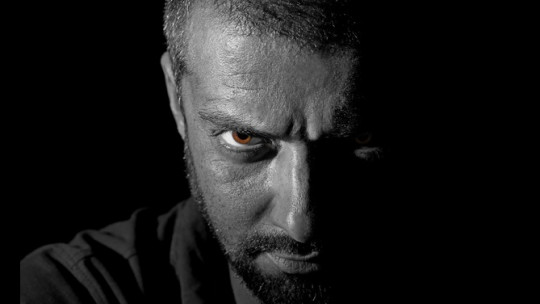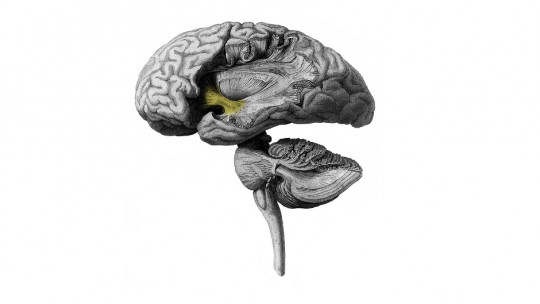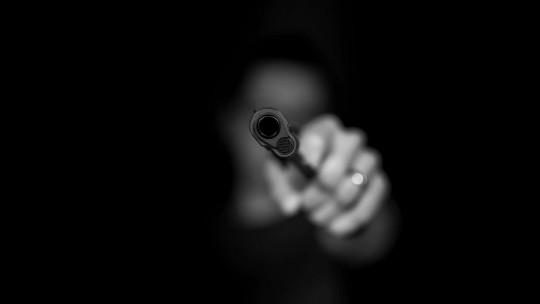The projective tests They are one of the psychodiagnostic tools that most clinical psychotherapists use. The basis for this is that when we write, draw or speak, we unconsciously project different aspects of our personality, conflicts and even our aspirations.
Usually, these tests They have a psychoanalytic basisWell, as we will remember, it was Sigmund Freudfather of psychoanalysis, who carried out the first explorations of the unconscious and its importance in our daily lives.
Analyzing the way psychopaths draw human figures
Intensive clinical experience has shown thatThe drawings of the human figure represent an intimate expression of the personality of the artist The Machover test is based on the theoretical foundation of the body schema that we project through drawing. Today we will talk about this, one of the most widespread, used and accepted projective tests by the psychoanalytic community; At the same time, we will examine the graphic characteristics that usually indicate some degree of psychopathy
Learn more about psychopaths: “Psychopathy: what happens in the mind of the psychopath?”
Generalities regarding the drawing
Three aspects are very important when examining the drawing before investigating the characteristics projected on the human figure: the dimension he space and the position
It has been found in Most of the drawings of psychopaths have very large strokes, characteristic of a personality with notable ego exaltation If we also find it in the middle of the page we can affirm that the subject has a need to control his environment. If it is on the right we can assume that there are problems with authority and antisociality.
Hand in hand with the need to control, we find certain dependence on your environment (since the psychopath has a great need to exercise control) if the drawing presents accessory objects outside the human figure. Other generalities that we will find in drawings made by psychopaths are the predominance of angles and peaks, highlights and intensity in the strokes. They also usually start by drawing a figure of their own sex and generally the head will be the last feature they draw.
Head
As expressed above, the head drawn by people with psychopathic personality tends to be the last part of the body to be drawn in addition, it is usually disproportionately larger in relation to body size, which is an indicator of egocentrism, megalomania and overvaluation of one’s intellectual capacity.
If it is also elongated it will be indicative of aggressiveness; If it is very marked, it will denote a need for dominance; If there is no defined head contour, problems with connection with reality may be suspected. Expression lines on the forehead and eyebrows that are very bushy or directed inward are indicative of latent aggression. Detecting emphasis on the eyes indicates paranoid tendencies, while A penetrating or threatening look, which is also accentuated, is a sign of latent hostility
Furthermore, very frequently, in drawings of psychopaths, a notable highlighting of the nostrils is found, which is interpreted as evidence of aggressiveness. The emphasis on the mouth usually demonstrates verbal aggressiveness and a special tendency toward irritability.
If the human figure is showing language, there is orality at a primitive level in the subject. Indisputable signs of aggressiveness at the oral level are: the presence of teeth (much more so if they show sharp edges or expose the canines), angular or peaked features, drawing the mouth as a thick broken line. When the neck is long and also thin, the subject has problems managing his impulses; The absence of this indicates that the subject is at their mercy.
The log
Another very particular characteristic that is frequently found in especially aggressive psychopathic personalities who have physically attacked other people is: the elevation of the chest that indicates narcissism, if it is also discovered it adds hostility and arrogance; With accentuated muscular characteristics, he is an aggressive individual.
Regarding the arms, The emphasis on the muscles and reinforcements in them show us aggressiveness and desire for physical power ; Finding the “jar” arms in the drawing reveals an arrogant person with anarchic tendencies; long arms indicate material ambition. Angular hands are always indicative of antisociality as they are parts of the body related to social bonding and contact.
This characteristic is also reinforced if we find fingers drawn in a point or as an express claw shape. Fist-shaped hands indicate strong repressed aggression.
Lower body area
If the legs are very reinforced, there is aggressiveness; also if the legs show movement or as if they were going to kick. Bare feet indicate primitive aggression, especially if the nails are showing.
When the genital area is exposed, there is exhibitionism and/or lack of control of sexual impulses ; If the drawing is accentuated in the genital area, as with excessive retouching, for example, or thoroughness in the drawing of the closure, there may be sexual disorders.
Other considerations
It should be remembered that the subject must always be asked to express a story regarding the drawn human figure, This story will complement the projective method and will help us clarify some concerns about drawing either
The clothing and actions carried out by the drawn individuals can also provide us with many data that tend to be especially compensatory. Among the outfits that psychopathic personalities prefer to draw, we very often find that of a neat businessman (very common in white-collar criminals) or someone who performs martial arts (with a higher incidence in those who commit physical contact crimes).
Finally, we insist that This projective test is complemented with others that allow us to delve deeper into the unconscious aspects of the personality of the individual.









